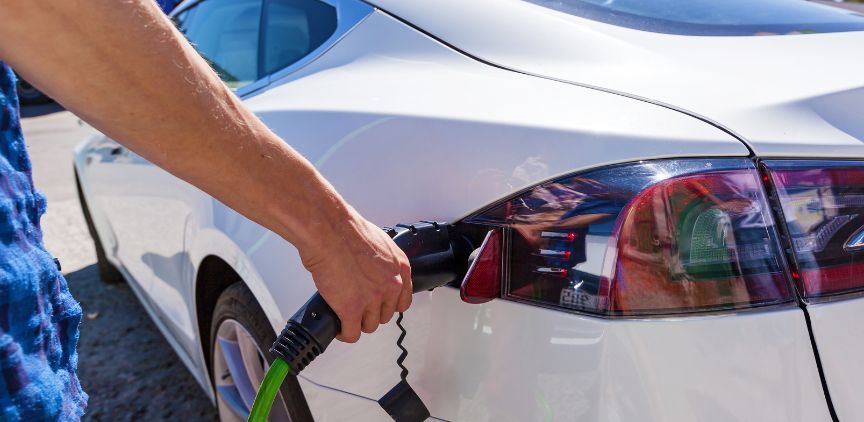The Cost of Driving a More Eco-Friendly Vehicle
Buckle your seatbelts, we’re entering the era of zero emissions. Unless you’ve been living under a rock, you surely have noticed the sheer number of electric vehicles cruising around your town, but what is the cost of charging an electric vehicle?
Paradoxically, those vehicles have never been quieter, despite others being louder than ever. A few weeks ago, I was driving behind an E63 AMG Mercedes that sounded like an F1 car downshifting into a tight chicane. It was alarmingly loud. Later that afternoon, I was about to cross my road when out of the corner of my eye, I noticed a vehicle approaching at the last second. My ears, however, failed to alert me due to the fact it was a Tesla operating in near silence at low speed.
It is a much broader issue, and many governments are proposing new “noise requirements” to help increase pedestrian and cyclist safety. It turns out that many pedestrians are getting hit by EVs simply because their usual suite of senses, sight, and sound, are diminished to just sight, which is clearly not enough, or what people are commonly used to. It’s just so much more difficult to sense an EV approaching than with a standard-fuel vehicle. In my opinion, these cars should be made to sound just like the flying vehicles portrayed in the cartoon The Jetsons. I think people would certainly pay attention to that sound!
Determining the Many Variables
Now, when it comes to the costs of charging an electric vehicle, be it a hybrid or full plug-in, there are many variables to consider, in fact, many more variables than gasoline-powered vehicles. With gas prices at almost record heights, it currently costs me over one hundred dollars to fill the tank on my Honda Accord. That, in turn, gives me about 250-300 miles to the tank. If I’m filling up weekly, I’m spending over five grand a year on fuel. Yikes!
Over on the EV side, with all conditions being optimal, one can squeeze out a cost of about $500 to $750 a year for charging costs; in return for a roughly 15,000-mile range. This number is based on an average cost of electricity of $0.13 per kilowatt hour; this can change based on where you call home. Now, there are some caveats, and they can oscillate widely.
My good friend Gary, who currently drives a 2021 Mustang Mach E Rear Wheel Drive with a standard battery, recently decided to calculate some of his charging costs. Additionally, we sat down to examine other issues affecting things like range, charging speed, speed of battery depletion, and other salient points. As it turns out, one major variable that affects all EVs is the outside temperature. Keep in mind that Gary and I live in Montreal and Toronto, respectively, and temperatures can easily fluctuate by fifty degrees or more between summer and winter.
Add in the difference between 110v and 220v chargers, and things become interesting. We calculated that a 110-volt charging station produces a range of approximately 2 miles/hr, vs. a 220-volt charging station which produces almost 25 miles/hr. That’s a significant time difference.
Gary’s calculations point to some interesting numbers. With his Mustang on a full charge, he can get a range of approximately 225 miles in the summer months. Switching to the middle of winter and his range drops to 145 miles. That’s a reduction of approximately 40%. Winter also greatly reduces the speed at which the batteries can charge, especially if both the charging station and the vehicle are outside.
Things to Consider with EVs related to the Cost of Running
- Up-front vehicle purchase price.
- “Kilowatt Guzzlers” vs efficient models.
- 110v Charger (Level 1 Charging) vs. 220v (Level 2 Charging) vs. DC Fast Charging (Level 3 Charging).
- Charging station costs.
- Home charging vs. public charging.
- Electric car overall weight.
- Vehicle cabin heating (winter months) vs. cooling (summer months).
- Newer efficient models vs. older, less efficient ones.
- Lower tire pressures increase drag and reduce range.
- Over-the-air app updates help increase battery efficiencies and longer-range capabilities.
- Highway speeds vs. in-town driving.
- “Leadfoot” driving and fast acceleration quickly deplete the battery’s charge (but it’s so much fun).
Benefits of Driving an Electric Vehicle
Electric vehicles are not necessarily a new idea. They have been around in some form for quite some time. However, global warming, with the need for more eco-friendly alternatives, has increased manufacturer R&D and subsequent vehicle production. Couple this with beautiful futuristic vehicle designs, and you have a drastic increase in the overall consumer adoption rate.
Doing your part for the environment and saving, sometimes considerably, on energy costs have proved attractive to early adaptors who can afford to purchase electric cars. With Tesla, Audi, Mercedes-Benz, and Porsche now offering expensive luxury EV models, some electric cars have even become status symbols. This phenomenon began with higher-end Teslas.
Paradigm Shift
The luxury of bypassing the gas station and not having to fork over your credit card for expensive weekly fuel has its perks. But charging an electric vehicle means planning and can induce what’s commonly referred to as range anxiety. Unlike having gas stations on almost every block, public charging stations are few and far between out there in “the wild.” It means that your old way of driving and “fueling up” has changed, especially with the current infrastructure not keeping up with the current crop of available electric cars.
Despite the vast fluctuation range in potential costs associated with charging and driving EVs, there’s no doubt that there are substantial savings to be had by not having to hit the pumps. Every country, state/province has varying costs for electricity and charging rates, so before you start crunching numbers, check out what you’re paying for electricity, what climate you live in, what kind of driving you to do, and where.
The bottom line, gas-powered vehicles are on their way out, and EVs, in one format or another, are here to stay.

